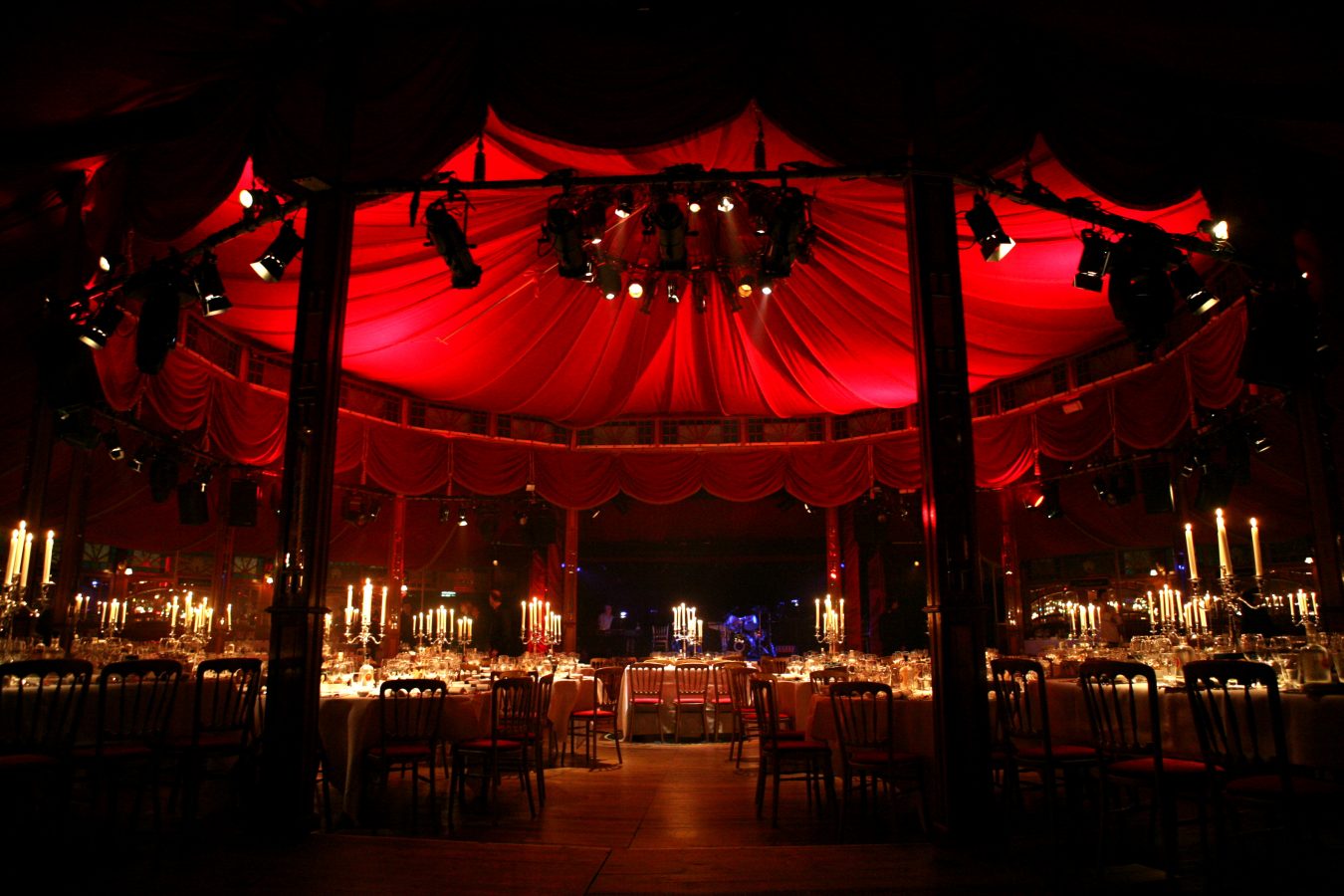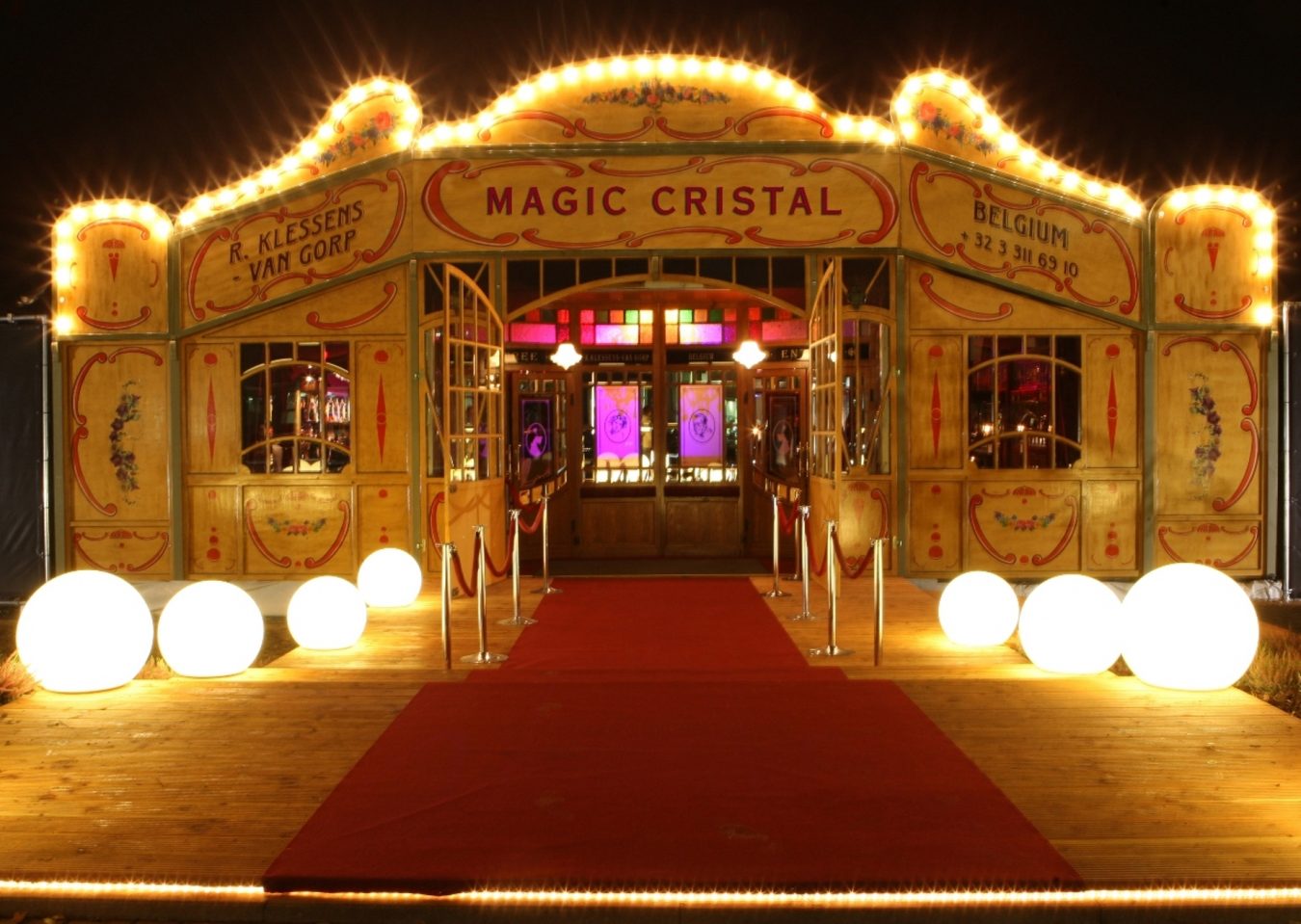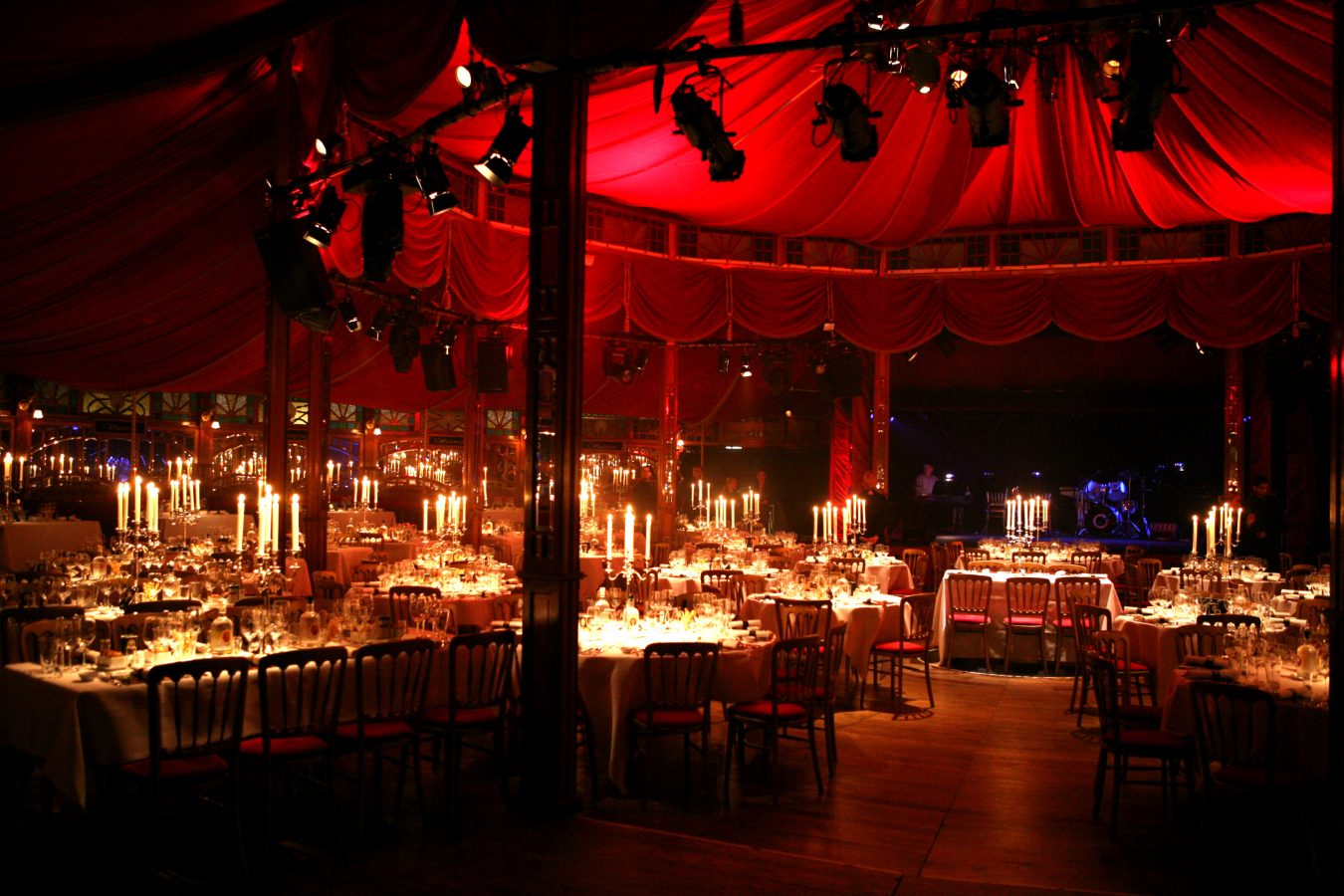There’s something big happening at Queen Elizabeth Park. Really big, in fact.
It’s hard to miss: a framework of some sort of circus-like structure, standing majestically against the park’s rolling green gardens on a crisp autumn day, as a team of young men assemble the pieces one by one. The work-in-progress tent is the future home of Bacio Rosso, Canada’s first cabaret-circus performance, complete with Italian dinner—think Moulin Rouge meets Cirque du Soleil. But it isn’t just any ordinary tent, and Rik Klessens will be the first to correct those who call it that: “It’s a palace.”
This “palace” is also referred to as an antique Belgian Spiegeltent, a large travelling marquee typically made of wood and canvas (but in this case, aluminum) and decorated elegantly with mirrors and stained glass. Since the 1920s, Klessens’s family in Belgium has been restoring and renting out these “magic mirror tents” across the world, and for the first time ever, he finds himself in Canada to help put the finishing touches on Bacio Rosso’s one-of-a-kind show.
“My grandfather started travelling very locally, from village to village, with two horses and a caravan,” Klessens, the family’s fourth-generation Spiegeltent builder, says of how the company began. “They were actually travelling dance halls back then.” He points to the wooden bottom laid on the ground at Queen Elizabeth Park. “This was the dance floor.” After the darkness of the First World War, Belgian people began to enjoy themselves once again and often took to fairgrounds in the country to dance, drink beer, and socialize. Klessens’s carpenter grandfather, Willem, decided to purchase an organ to tour around the parties, but he could only get his hands on the instrument under one condition: he also had to buy the wooden pavilion it came with. Willem redesigned the tent (which at that point had only poles and a small dance area), putting the floor on beams and adding one single mirror in the middle of the room, decorating it with flowers. He called this newly vamped arena The Classique. “It was such a success,” Klessens says of his grandfather’s first travelling gatherings. “It brightened life.”
Willem eventually built a second tent that his two sons took over operations for. When the Second World War hit Belgium, Klessens’s uncle lost his tent to the Germans, who used the materials to build a bridge. But his father continued to travel across the country with the other Spiegeltent, and the business slowly became a family tradition: during the week, everyone would build up and dismantle tents, and on the weekends, they would serve at the bars. The music of the organ soon faded into the tango, waltz, and foxtrot as the 1950s rolled in; then, rock and roll took over. With post-war entertainment booming, more and more Spiegeltents began popping up around Belgium. “There were about 100 tents, about three or four at every fair,” Klessens explains. “Everyone was making their tent more and more beautiful than the other one: more chandeliers, more mirrors, better bands.” And then, in the 1980s, with the rise of discotheques in Europe, Spiegeltents were labelled as old-fashioned, and few young people showed up to the fairs to dance. “But my father, he was a clever guy,” Klessens says with a remembering smile. “We had four tents at the time and we changed two tents into travelling discos. We competed with discos, so we survived.” When the Dutch came calling, asking to rent out one of the Spiegeltents for a music festival, the family knew it was time to introduce their work to the rest of world. Klessens began touring with the tents at the age of 14, and years later, he and his wife took over the business.
If it’s not Klessens following his tents to whatever location they are rented in, it is his son, Gerry, the fifth generation Spiegeltent purveyor, who takes on the job. With Gerry currently overseeing a tent’s construction in Germany, Klessens ventured to Vancouver to supervise everything for Bacio Rosso (which has shows running until Jan. 1, 2019)—from the arena’s stained-glass mirrors to its oak flooring. The Klessens family, along with their team, design and build every single detail of these grand marquees by hand in Belgium (and then the pieces are put together onsite around the world): lush red velvet, made by Klessens’s wife; golden tassels and fringes; crafted woodwork; and over two thousand bevelled mirrors. “If you put one candle on the table, it will seem as if 100 candles are sparkling in the tent,” he muses. “It looks like diamonds.” It’s Vancouver’s very own life-sized jewel box—catch a glimpse before it’s gone.
Browse even more in Design.











